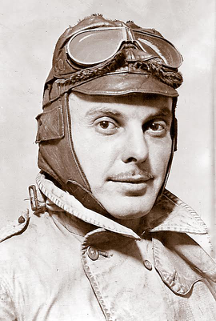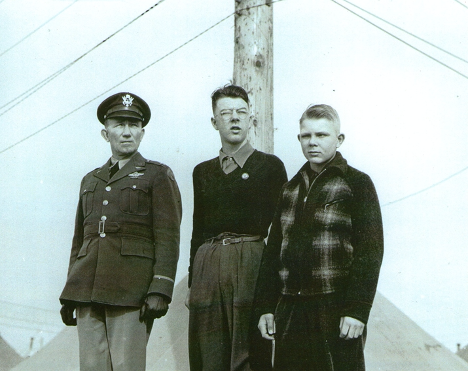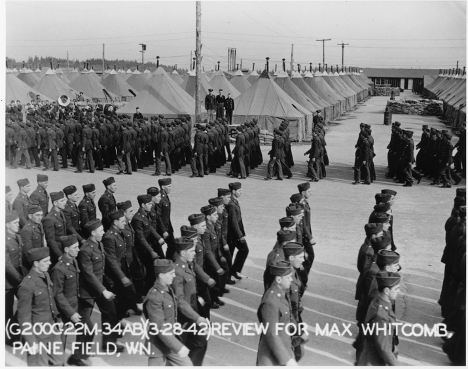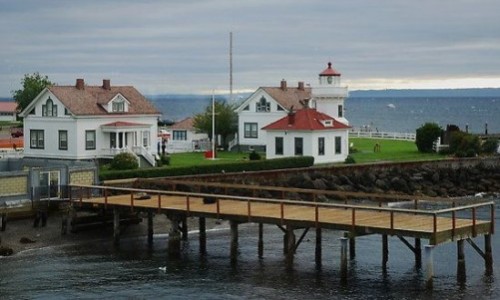By John and Anne Collier, Mukilteo Historical Society
Military Base or County Airport?
Paine Field Airport was begun as an airport for Snohomish County in 1936. It was a part of the federal effort by the Works Progress Administration (WPA) to combat unemployment during the Great Depression by building ten “super airports” around the country.
Located on unincorporated county land between Mukilteo and Everett, the site was initially selected because the area was so unpopulated and relatively free of fog. Initially, 640 acres were purchased from the timber interests of Merrill Ring Logging, and Pope and Talbot. By the time the airport was completed, some 2.5 million cubic yards of earth had been moved in massive clear-cutting, excavating, and leveling operations.
After the attack on Pearl Harbor, the fledgling county airport was rapidly transformed into an army air base to provide air defense and refueling facilities for the Pacific Northwest. It also served as a training site for pilots and other personnel prior to deployment. The primary interceptor aircraft based at the newly named Paine Field were P38s, P39s, and P40s.
Topliff Olin Paine

Paine Field was named for Topliff Olin Paine, a veteran of World War I. Born in Ohio in 1893, “Top” Paine moved with his family to Everett in 1903, and was graduated from Everett High School in 1911. He attended the University of Washington, worked as a U.S. Forest Ranger, and then served in the 12th Company of the Army Infantry in Everett.
After his discharge in 1919 from the Army Air Corps, Paine became a civilian pilot employed by the U.S. Air Mail Service. He inaugurated a treacherous airmail route from Rock Springs, WY, to Salt Lake City, receiving national acclaim on several occasions when he survived storms or landed his plane where it was thought to be impossible. His luck ran out, however, when he was killed by an accidental gunshot wound in 1922. The name of the Snohomish County Airport was changed by the army in April, 1941 to honor Second Lieutenant Paine.
Max Whitcomb, Jr.: Mukilteo’s Own Hero
During World War II, some of the many training flights from Paine Field were not successful. On Sunday, March 23, 1942, Robert W. Neel crashed his plane some 600 yards off Nakeeta Beach in Mukilteo. Fourteen-year-old Max Whitcomb, Jr., saw the P-38 go down into the choppy waters. Without hesitation he and his younger brother, Paul, carried their 12-foot row boat to the shore. Max rowed into the teeth of the storm and managed to pull the pilot into the boat in spite of Neel’s injuries and heavy clothes.

Max Whitcomb put Mukilteo on the map that week. Following interviews on KOMO and KIRO radio stations, he was honored by a full military review at Paine Field. He was allowed to bring one guest, so Max chose his younger brother to stand beside him and the commanding officer of the base, Col. A. C. Strickland. When Eddie Richenbacker came to Paine Field the next day, a meeting was arranged between Max and the legendary pilot of World War I. According to one account, Col. Strickland brought them together with the following words: “I want an old hero to meet a new hero.”

Paine Goes Civilian Again as the Air Force Goes South to McChord
In October 1945, the airport reverted back to Snohomish County, only to be reactivated for military use again in 1949, this time for the newly created Air Force. During the Korean conflict and later during the build-up for Vietnam, Paine Field was used for both civilian and military purposes. For a time in the 1950s, the site was named the Paine Air Force Base, and its operations were dominated by the military. In the mid-1960s, however, the Air Force and Defense Department turned their attention toward McChord Air Force Base and the Paine property was returned to Snohomish County’s jurisdiction, where it has remained ever since.
The Boeing Company Comes to Paine Field
As the interest of the Air Force waned, Snohomish County increased its efforts to promote private enterprises around the airport. Low-cost leases and tax breaks were granted to small start-up companies to increase usage of the airport and bring in more jobs. By the late sixties, some sixteen firms filled the airport’s industrial park, including charter flight services and flight instruction.
It was the Boeing Company, however, that became the dominant influence in the area when in 1966 it selected a site just north of the airport for the manufacture of its new and revolutionary 747 airplane. Boeing expanded its gigantic plant in 1978 to build the 767. Then it expanded again in 1992 when additional space was needed for the new 777 aircraft. Boeing’s continuing success spurred more economic activity, such as, for example, Aviation Technical Services, which operates one of the largest aerospace repair facilities in North America.
Mukilteo and the Future of Paine Field
Mukilteo has benefitted significantly in the past from the nearby presence of Paine Field. The airport’s expansion during World War II, for example, was a major contributing factor to the growth of Mukilteo and its incorporation as a city in 1947. The economic benefits of Boeing and all the related manufacturing and service companies are obvious to all. Often overlooked has been the surge in tourist revenue in the area from all the aviation-related museums now flourishing around the airport.
The overriding question remains as to whether these considerable benefits will be outweighed in the future by the airport’s increasingly negative impact on Mukilteo. Media coverage of the start of regularly scheduled commercial passenger flights has been overwhelmingly positive. Supporters of this change seem to be channeling the original 1930s vision of a “super airport.”
But the area is no longer remote and unpopulated. Despite the current hoopla, deep-seated concerns remain among many residents regarding aggravating noise, traffic congestion, air pollution, lowered property values, decreased personal safety, and other quality of life issues. Residents are already hearing from friends and relatives regarding “park and fly” possibilities at their homes! Will these “downs” outweigh any economic “ups” in the future?
Originally published in the 6/5/2019 issue of the Mukilteo Beacon.
